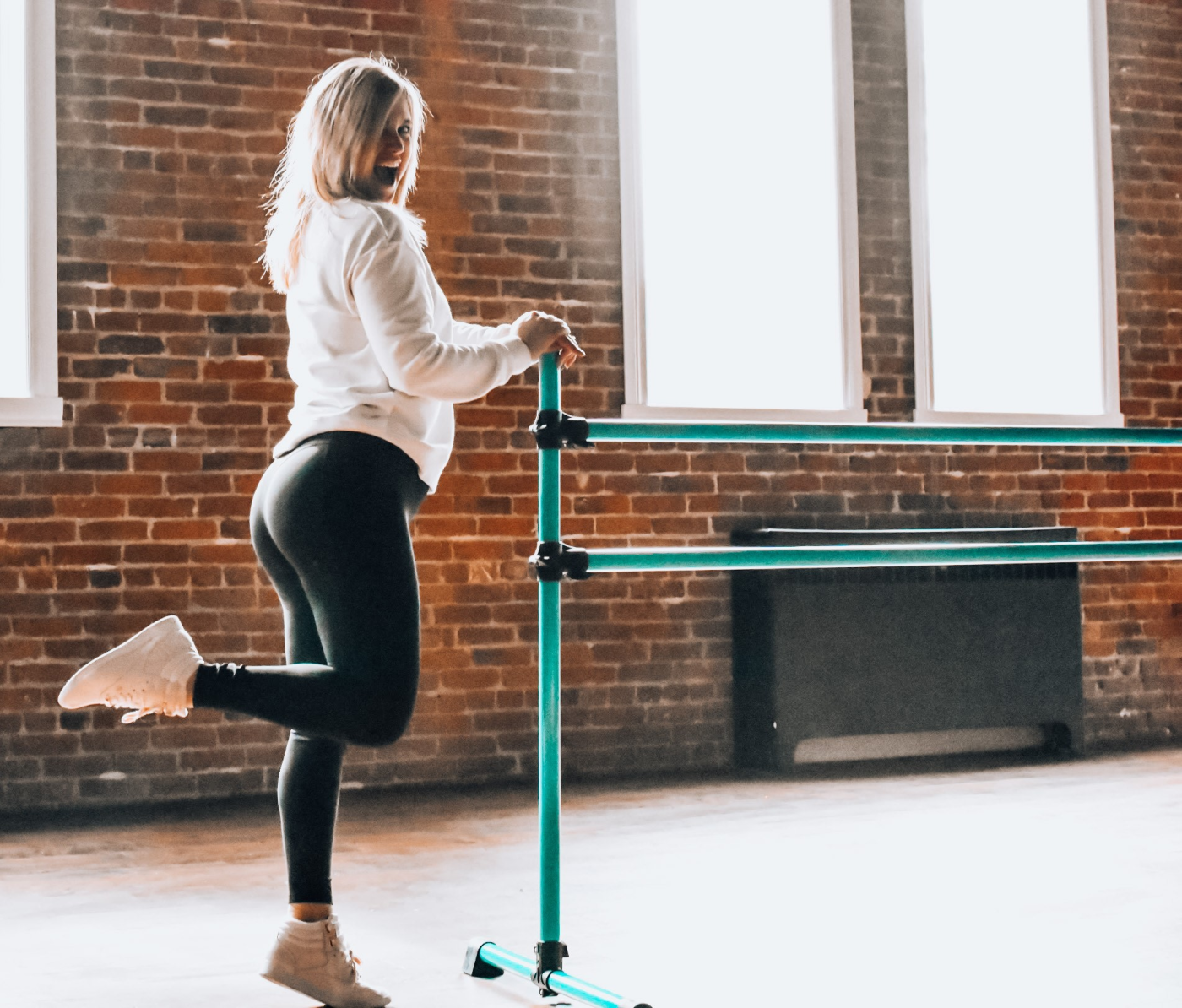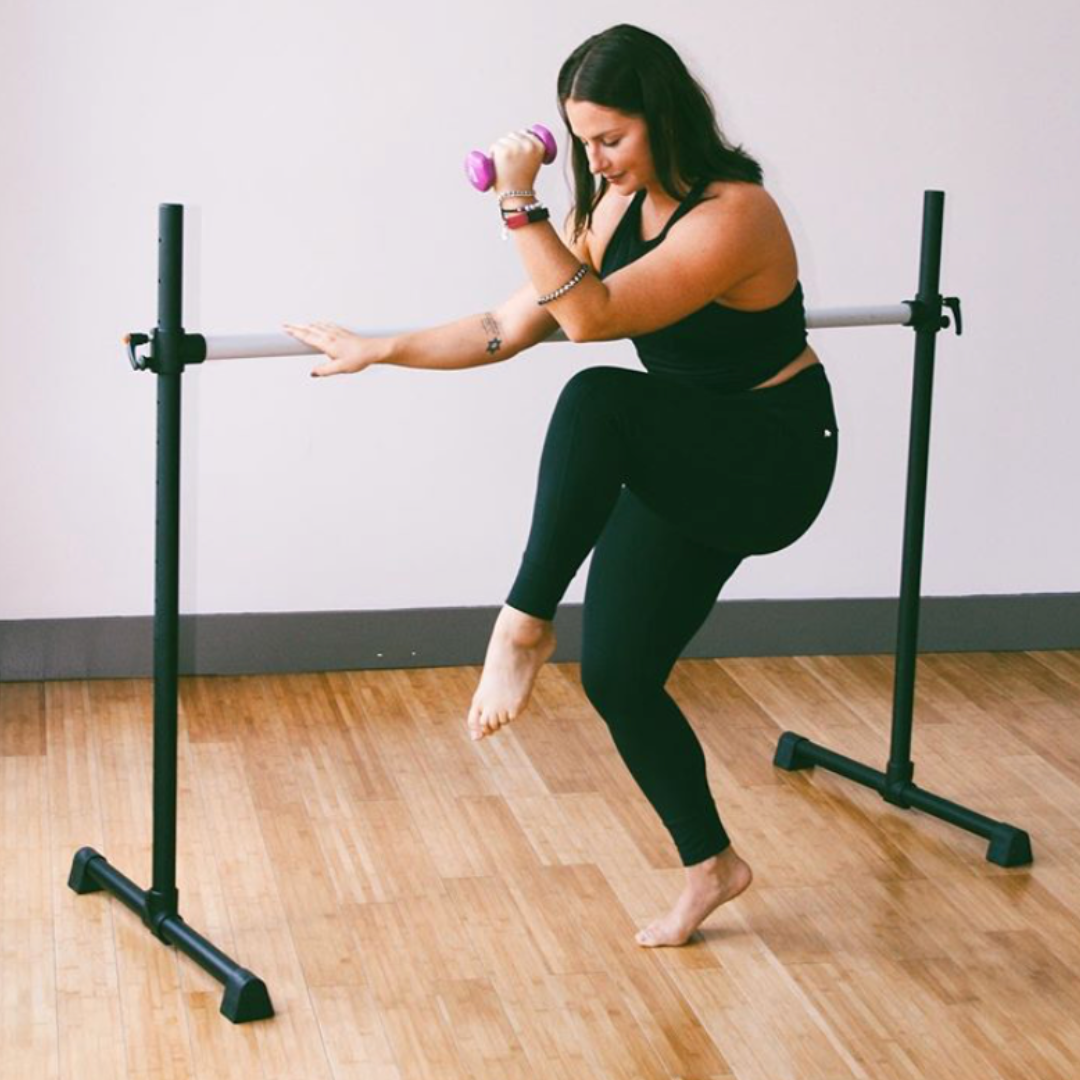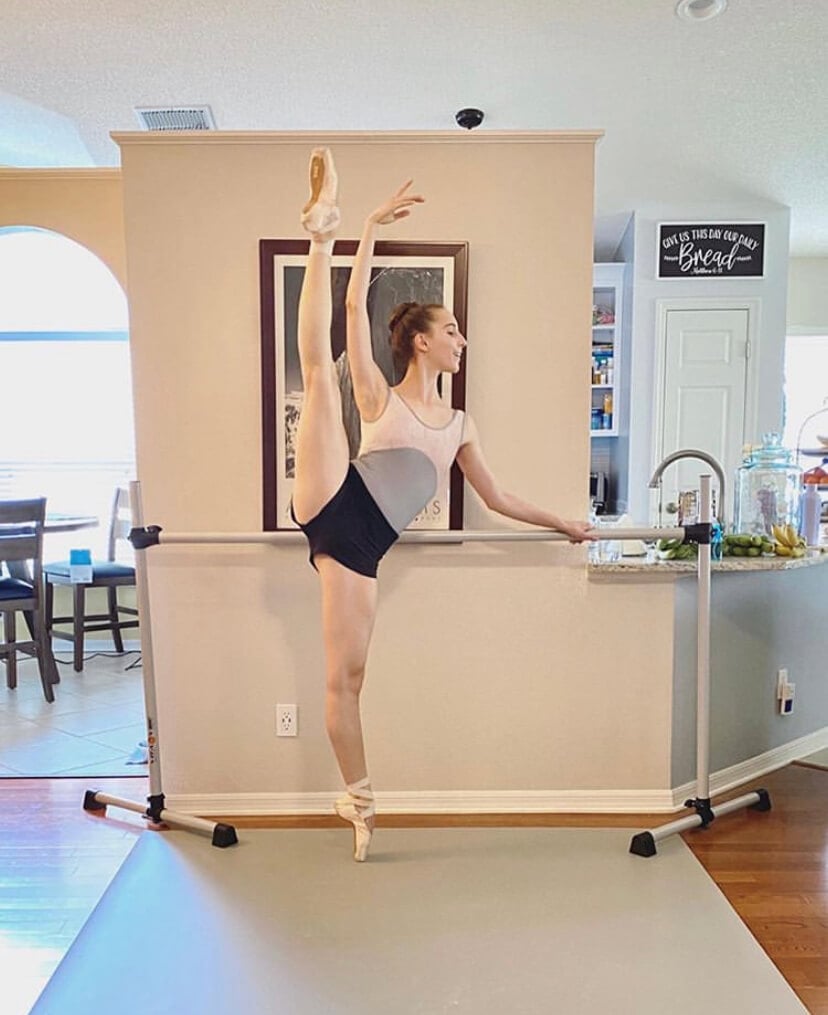Creating the Perfect Home Studio: Essential Ballet Barres & Equipment
10/28/2024 10:40pm

In the world of dance, having a dedicated space to practice and perfect your craft is not just a luxury but a necessity. Dance, whether it's ballet, contemporary, jazz, or any other style, demands more than just passion; it requires consistent practice and the right environment to truly flourish. For many dancers, creating an at-home studio offers a unique blend of convenience and personal expression. Imagine the freedom of being able to practice at any time of day, without the need for a commute or strict class schedules. Transforming a corner of your home into a personal dance sanctuary can be both an exhilarating and deeply fulfilling endeavor.
Setting up an at-home dance studio involves much more than simply finding a bit of extra space. It requires careful consideration of various elements that will collectively contribute to a functional and inspiring environment. From selecting the appropriate flooring to choosing the right ballet barres, every detail plays a crucial role in enhancing your practice experience.
Investing in the right equipment is essential to creating a space that not only supports your physical needs but also ignites your creative spirit. The process of setting up your studio is a chance to tailor your environment to suit your individual style and preferences, making your practice sessions more productive and enjoyable.
In this comprehensive guide, we’ll delve into the key components necessary for building a home dance studio, with a particular focus on barres and other essential equipment. We’ll explore various types of barres—such as wall-mounted, freestanding, and portable—and their respective advantages and considerations. Additionally, we’ll discuss the importance of flooring, mirrors, sound systems, and other supplementary tools that can transform an ordinary room into a dedicated dance space.
1. The Foundation: Choosing the Right Space
Before diving into equipment, it’s important to select the ideal space in your home. Look for a room with ample natural light, high ceilings, and enough floor space for movement. Ideally, this space should be free from heavy furniture and other obstructions that could hinder your practice. Ensure that the flooring is suitable for dancing—wood or laminate floors are often best, as they provide a bit of give and are easy on the joints.
2. Essential Barres: The Heart of Your Studio
A ballet barre is an indispensable tool for any dancer, providing support and stability during exercises. Here’s a breakdown of the types of barres you might want to consider placing into your at-home studio.
- Description: Wall-mounted barres are fixed to the wall and provide a sturdy, permanent solution for your studio. They are ideal for those with a dedicated space and who prefer a more professional setup.
- Advantages: Space-saving and highly stable, allowing for a secure grip.
- Considerations: Installation requires drilling into walls and ensuring the wall can support the weight. It is also important to remember that you should not install wall-mounted Barres on windows or mirrors. Check Out Vita Barres Installation guide here, https://vitabarre.com/installation-information/
- Description: Freestanding barres are versatile and can be moved around as needed. They come in various heights and can be adjusted to suit different exercises.
- Advantages: Flexibility in placement and allows for no permanent installation required.
- Considerations: May take up more floor space and can be less stable than wall-mounted options.
c. Portable Barres
- Description: Portable barres are lightweight and often collapsible, making them perfect for smaller spaces or multi-use rooms.
- Advantages: Easy to store and transport, making them great for shared spaces.
- Considerations: Generally less durable and stable compared to other types of barres.
When choosing a barre, consider the material and finish. Hardwood barres are traditional and offer a classic feel, while metal barres are durable and often come with adjustable heights.
Click this link to view all the barres that Vita Barre has to offer https://vitabarre.com/shop/freestanding-ballet-barres/
3. Flooring: The Unsung Hero of Your Studio
The right flooring can make a significant difference in your practice. While a wooden floor is ideal, consider investing in dance-specific flooring or protective mats if your existing floor isn’t suitable. Marley flooring is a popular choice among professional dancers for its durability and shock absorption. For a more budget-friendly option, dance mats can provide a similar effect.
4. Mirrors: Reflecting Your Progress
Mirrors are essential for any dance studio, allowing you to monitor your form and make necessary adjustments. A full-length mirror will enable you to see your entire body and ensure that your technique is precise. If wall space is limited, consider a mirror that can be mounted on a door or use mirrored panels to create a similar effect.
5. Sound System: Setting the Rhythm
A good sound system is crucial for practicing music. Invest in quality speakers that deliver clear sound and can fill your practice space adequately. Bluetooth speakers are a flexible option if you prefer a wireless setup, while traditional speakers might offer superior sound quality.
6. Additional Equipment: Enhancing Your Practice
a. Stretching and Strengthening Tools
- Resistance Bands: Perfect for increasing flexibility and strength.
- Foam Rollers: Great for muscle recovery and reducing soreness.
- Yoga Blocks: Useful for various stretching and strengthening exercises.
b. Storage Solutions
To keep your studio organized, invest in storage solutions for your equipment. Shelves, bins, and racks can help keep your space tidy and ensure that your barres, mats, and other tools are easily accessible.
7. Personal Touches: Making the Space Your Own
Finally, don’t forget to add personal touches to your studio. Decorate with motivational quotes, artwork, or even a vision board to inspire you during practice. Comfortable seating and a water station can also enhance the functionality and enjoyment of your space.
Conclusion
Creating an at-home dance studio is a fantastic way to elevate your practice and immerse yourself in the art of dance. By investing in essential barres and equipment, and setting up a well-thought-out space, you’ll be well on your way to achieving your dance goals. Remember, the key is to create a space that feels inspiring and functional, allowing you to dance freely and passionately in the comfort of your own home.




